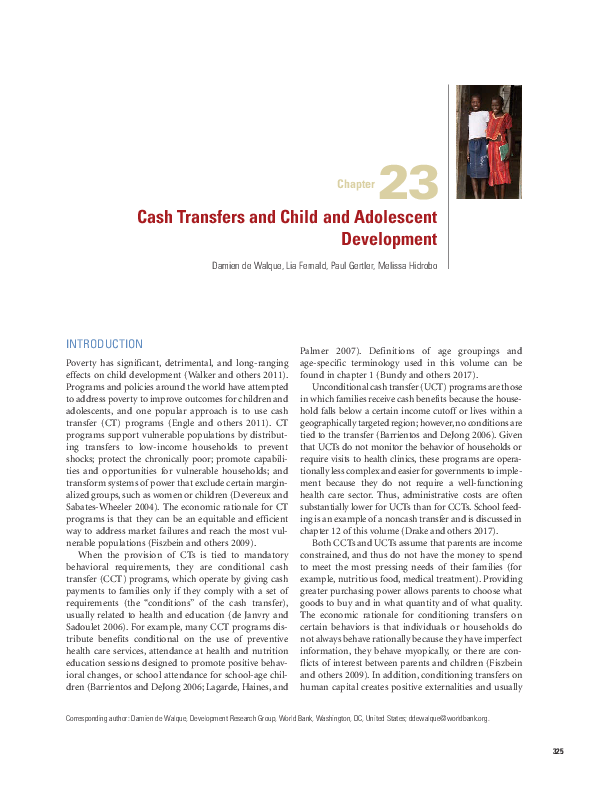
DCP Chapter 23: Cash Transfers and Child and Adolescent Development
Publication year:
2017
English
Format:
pdf (186.5 KiB)
Publisher:
The World Bank Group
The evidence from cash transfer (CT) programs throughout low- and middle-income countries (LMICs) and their direct effects on the health and education outcomes of children and adolescents is reviewed in this chapter, followed by a discussion of the design of CT programs and why and how they could theoretically affect the outcomes of young children and adolescents. Strong evidence indicates that CT programs keep adolescent students enrolled in school longer, but their effect on adolescent health remains uncertain. It remains very difficult to compare results across countries and contexts, because unconditional cash transfers (UCTs) and conditional cash transfers (CCTs) have heterogeneous objectives, targeting, and conditions applied to the transfer, the amount of the transfer, and complementary services. CCT programs also differ because of country-level differences in the supply of health services. Policymakers should not assume CT programs will prove the most efficient intervention for improving the health outcomes of children and adolescents. The specific context, design, and objectives of each successful experience require careful consideration before replication and implementation in other settings.
>> Press here to return to the Disease Control Priorities (3rd Edition) Start Page
Read full abstract
Authors
View & Download
English
1 Documents
Document information
Publisher
Format
Rights
© Author/Publisher
Found a mistake? Help us improve!
If you have noticed a document assigned to the wrong author or any other inaccuracies, let us know! Your feedback helps us keep our data accurate and useful for everyone.
Share
Link
